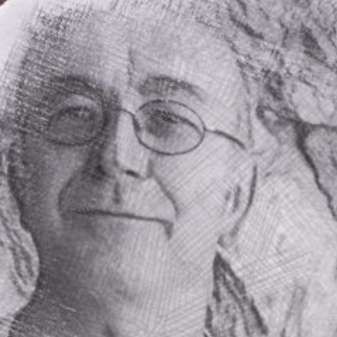St Giles’ Cathedral, at the top of Edinburgh’s Royal Mile, boasts a wonderful acoustic. From the chancel of this magnificent building a string quartet, drawn from the Red Note Ensemble’s flexible and varied forces, presented a late-evening, candlelit programme of meditative music entitled, Hymn of Thanks (Transcendence). Considered a run-up to Red Note’s forthcoming The End of the World! (For one night only) event, this meditation seemed to dwell on the following themes: monastic meditation; endings and beginnings; swan songs; death avoided; and thanks given. Given the nature of the performance, we were requested to avoid breaking the mood with applause – until the end.
Arvo Pärt's monastic Fratres (“Brothers”) is a 1985 string quartet version of his 1977 original for chamber ensemble. The work’s meditative quality rests on its contradictions: movement without pulse; a tonal centre without Western harmony’s traditionally repeated striving to return there. This could be due to the odd scale upon which the piece is built (G, A flat, B, C, D, E flat, F, G). In addition, two instruments are required to de-tune their lowest string; the viola by a tone and the first violin by a more drastic major third. This seemed to present slight problems of intonation in the opening section, which features ethereal, artificial harmonics. However, this was quickly overcome and the following, more sonorous sections made the most of the building’s acoustic without ever straying towards a romantic sensibility.
Much more rhapsodic was Tōru Takemitsu’s 1980 A Way A Lone. Its odd title comes from the final sentence of James Joyce’s Finnegans Wake, “The keys to. Given! A way a lone a last a loved a long the ...” Like Joyce, Takemitsu sought escape from the tyranny of linear time and hoped to suggest a more circular conception of time. While this might prove difficult to perceive in a first hearing, I can vouch for this piece having the most astonishingly beautiful ending – even if it felt as though more might follow. The body language of the quartet was, perhaps unsurprisingly, far more active than in the Pärt, especially second violinist Tom Hankey who had patiently sustained a single note, and then an unmoving fifth throughout the piece. However, this increased movement did not include a sense of pulse. I really enjoyed this piece’s changeable language, which summoned to mind a dark, slightly jazz-orientated Alban Berg. I also greatly enjoyed the performance.
Having already commissioned two quartets from Henryk Górecki (1933–2010) the Kronos Quartet patiently awaited a third, whose arrival was scheduled for 1994. It finally materialised in 2005 when the composer confessed that he could offer no explanation for the its delayed release into the world. Inspiration came from words by poet Velimir Khlebnikov (1885–1922): “When horses die, they breathe / When grasses die, they wither / When people die, they sing songs.” This explains his String Quartet no. 3, Op. 67’s subtitle, “Songs are Sung”. In this programme the closing fifth movement was offered. Despite the swan song-like beauty of the writing, there is an undeniable tinge of sadness, communicated by the near permanent presence of the interval of a minor third. A programmed alternation of stillness and movement appeared to be taking shape, as this work was a great deal less animated than Takemitsu’s. The beauty of the harmonies was sensitively communicated, as were the dissonances which prevent the work approaching anything like sentimentality. By this point in the programme, I had become fascinated and impressed by the quartet’s democratic approach to ensemble; I was seated about three metres from them. Leadership seemed to pass to the person whose part conveyed the most useful musical information. In this kind of music, and in this acoustic, phrase endings required as careful handling as entries. On the strength of this performance, I feel compelled to seek out the complete quartet.
The programme’s alternation between stillness and movement also featured within the final item, the third movement of Beethoven's String Quartet no. 15 in A minor, Op. 132. The movement is subtitled Heileger Dankgesang (“Hymn of Thanks”) following the composer’s recovery from an intestinal complaint he had feared life-threatening. Three hymn-like, contrapuntal sections, featuring rising sixths and falling fifths, are separated by more joyfully animated passages. The players really hit the mark with this piece. The otherworldliness of the adagio sections was wonderfully communicated. 187 years on, this music still emits a searching quality to modern ears. The quartet’s light touch in the contrasting sections conveyed relief and renewed life, while avoiding any incongruity with the programme's meditative aim, or indeed the cathedral's acoustic.
Having watched from close up, I now feel I could distinguish each piece from this ingeniously conceived programme on a muted DVD. This speaks volumes about the players’ ability to merge with and communicate the music – and the value of experiencing live music.


